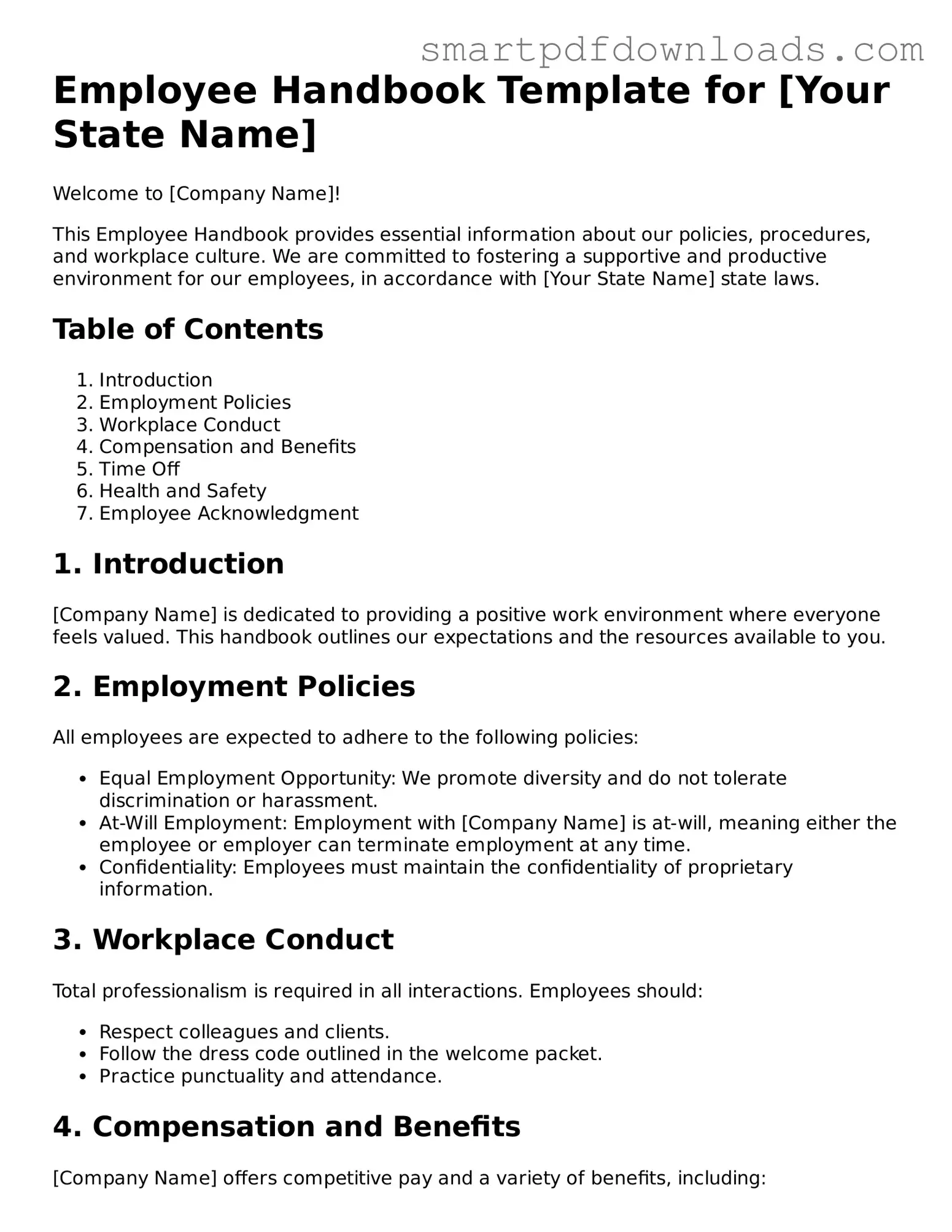Employee Handbook Template for [Your State Name]
Welcome to [Company Name]!
This Employee Handbook provides essential information about our policies, procedures, and workplace culture. We are committed to fostering a supportive and productive environment for our employees, in accordance with [Your State Name] state laws.
Table of Contents
- Introduction
- Employment Policies
- Workplace Conduct
- Compensation and Benefits
- Time Off
- Health and Safety
- Employee Acknowledgment
1. Introduction
[Company Name] is dedicated to providing a positive work environment where everyone feels valued. This handbook outlines our expectations and the resources available to you.
2. Employment Policies
All employees are expected to adhere to the following policies:
- Equal Employment Opportunity: We promote diversity and do not tolerate discrimination or harassment.
- At-Will Employment: Employment with [Company Name] is at-will, meaning either the employee or employer can terminate employment at any time.
- Confidentiality: Employees must maintain the confidentiality of proprietary information.
3. Workplace Conduct
Total professionalism is required in all interactions. Employees should:
- Respect colleagues and clients.
- Follow the dress code outlined in the welcome packet.
- Practice punctuality and attendance.
4. Compensation and Benefits
[Company Name] offers competitive pay and a variety of benefits, including:
- Health insurance options.
- Retirement plans, including a 401(k).
- Paid training and development opportunities.
5. Time Off
The following time off policies apply:
- Vacation leave is accrued at [specify rate].
- Sick leave can be used for personal illness or caring for immediate family members.
- Federal holidays are observed as per law.
6. Health and Safety
We prioritize the health and safety of our employees. Therefore:
- Follow all safety guidelines.
- Report any unsafe conditions to your supervisor immediately.
- Participate in required safety training sessions.
7. Employee Acknowledgment
Please sign the acknowledgment form, found in the new hire packet, to confirm your understanding of these policies. Return it to [appropriate office/HR department].
Thank you for being a part of [Company Name]. We look forward to a successful partnership!
